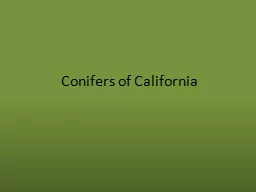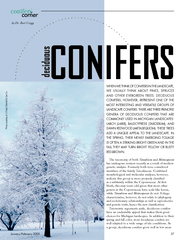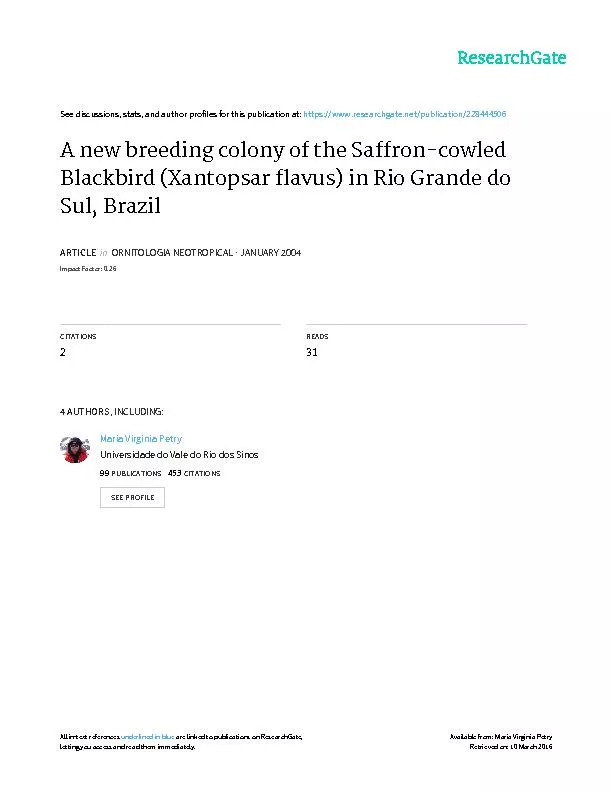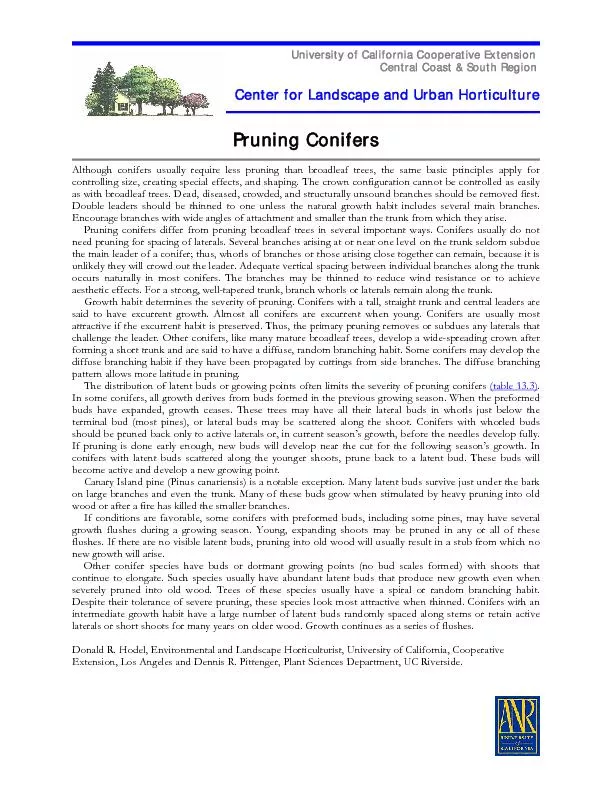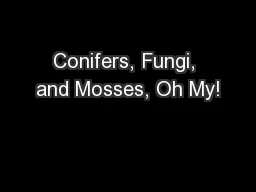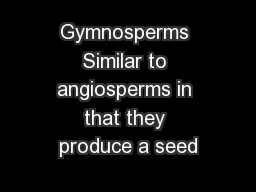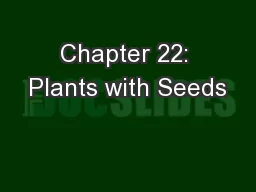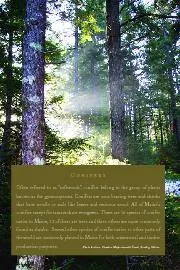PPT-Conifers of California
Author : pamella-moone | Published Date : 2015-12-09
What is a Conifer The name conifer comes from Latin and means cone bearing All conifers bear their male and female reproductive organs in separate cones strobili
Presentation Embed Code
Download Presentation
Download Presentation The PPT/PDF document "Conifers of California" is the property of its rightful owner. Permission is granted to download and print the materials on this website for personal, non-commercial use only, and to display it on your personal computer provided you do not modify the materials and that you retain all copyright notices contained in the materials. By downloading content from our website, you accept the terms of this agreement.
Conifers of California: Transcript
Download Rules Of Document
"Conifers of California"The content belongs to its owner. You may download and print it for personal use, without modification, and keep all copyright notices. By downloading, you agree to these terms.
Related Documents

